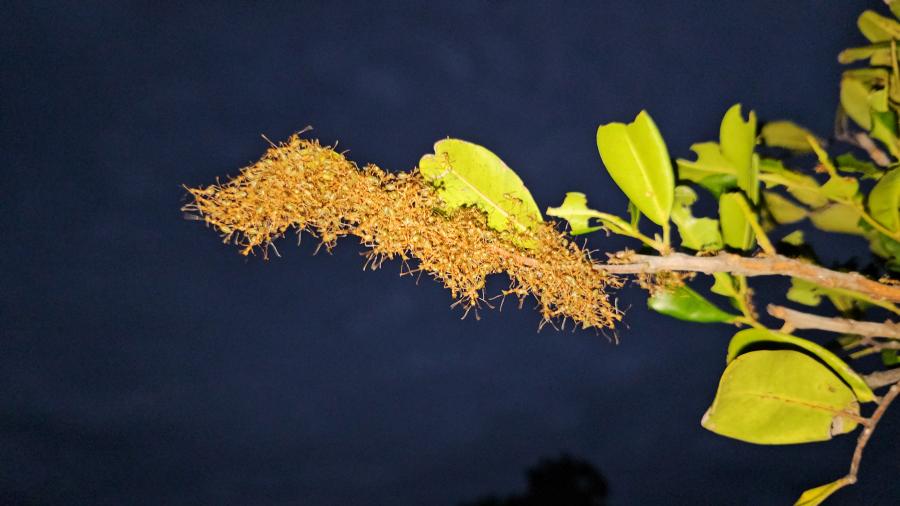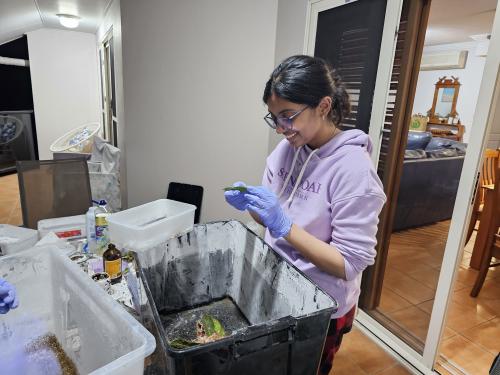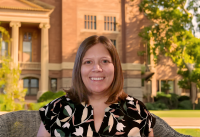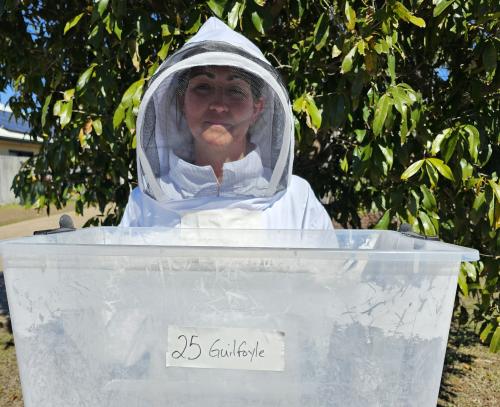Virtual beehive research course bridges gap for online students
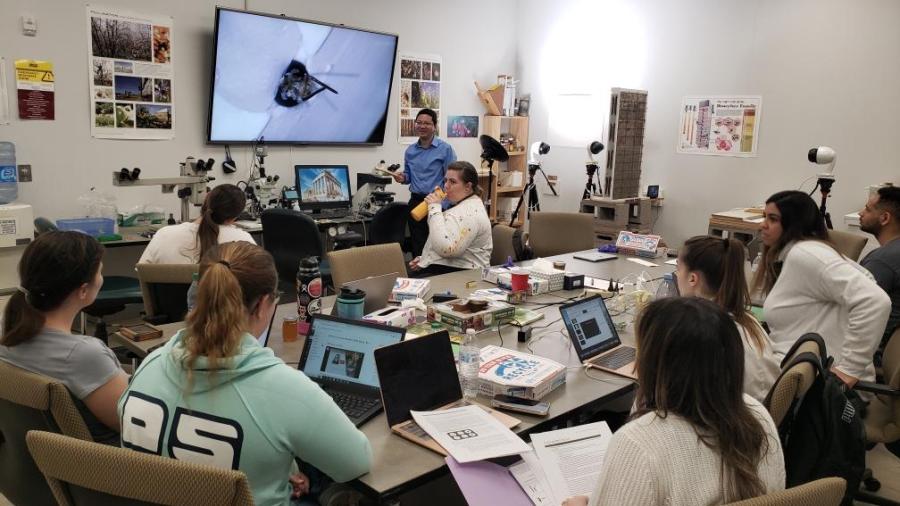
Hong Lei, instructing the class during an immersion week for online students when the course first began in Spring 2023. Photo provided by Hong Lei.
The School of Life Sciences' pioneering online research course, “Behavioral and Molecular Analysis of Honey Bees,” engages students in hands-on scientific exploration from anywhere in the world. The course isn’t just about watching bees - professors Hong Lei and Cahit Ozturk co-instruct the course and provide a unique opportunity for students to conduct real-world research through live, 4k-capable web camera feeds of beehives. Students in the course design and conduct original research projects on bee behaviors, analyzing data on temperature, humidity and hive activity to understand how environmental factors impact bee behavior.
In just seven weeks, students complete a cycle based on observations of bees in an “observation hive” — a unique hive with glass walls that allows viewers to watch bees as they perform daily activities, from the famous waggle dance to foraging and hive maintenance. This includes observation, data collection, and analysis. At the end of the course, they present their findings in a manuscript format, some even posting their work on Open Science Framework for public access. For students, this course doesn’t just end with a grade — it leaves them with a lasting piece of scientific work.
This virtual lab experience offers students the opportunity to collect and analyze real data. Marilyn Roberts, a senior majoring in biological sciences with a concentration in ecology and conservation, described the course as pivotal in helping her develop essential research skills. “I expected it to be more like virtual biology labs, where everything is simulated,” she said. “But it wasn’t like that at all. I came up with my own questions, collected my own data and ran analyses through software. I genuinely felt like I was doing research, just as I would in person.”
Roberts’ project explored the activity levels of forager bees during the winter to determine if they store extra honey in preparation for the harsh Arizona summers. “I monitored the forager bees returning to the hive over a period of days, sometimes using specialized software to count them, and analyzed the data alongside temperature readings,” Roberts said. “Though I couldn’t prove my hypothesis definitively, I found enough interesting trends to suggest there’s more to investigate.”
Her newfound confidence in research even inspired her to present her findings at ASU’s undergraduate symposium, where she earned an honorable mention. “Research was always intimidating to me, but this course gave me so much confidence,” Roberts shared.
“It’s incredibly rewarding to see how engaged the students are,” said Lei. “They get to experience the entire research process — from question formulation to manuscript writing. Some of our students, like Mariana Bustamonte, have even used this course to strengthen their applications to graduate programs.”
Mariana Bustamante took the course while living in Belgium. “I didn’t know I could be a researcher until I joined this class,” Bustamante explained. “I never knew that was an option for my life, and it opened a bunch of new doors for my future.” Her research focused on “undertaker” bees, a subset of honey bees responsible for removing dead or diseased bees from the hive. She observed how temperature fluctuations impacted their efficiency and noticed that colder temperatures led to higher rates of “mistakes,” as undertaker bees occasionally left deceased bees in the hive. “This sparked my interest in how temperature might affect cognitive abilities in insects,” Bustamante said.
Students’ research experiences are made possible by the seamless support Lei provides in response to their requests. “If I emailed Dr. Lei about needing a camera movement or a temperature change, by the next day, the adjustments were made,” Bustamante noted. Roberts echoed this, mentioning the flexibility in camera setups that allowed her to track her bees’ movements efficiently.
The course has been a huge success, quickly reaching maximum enrollment each term and recently expanding to include graduate students. Ozturk, who works on ASU’s Polytechnic campus has worked with bees for over 30 years. He ensures that the hive environment is optimal for observation. “We make sure everything is ready for students to collect data remotely,” he said, emphasizing the dedication behind the scenes that makes this virtual research possible. “We open the hives, check on their health and ensure everything is ready for students to collect data remotely.”
Reflecting on the experience, Roberts shared her appreciation for the unique opportunity ASU provides to online students: “ASU’s undergraduate research program is phenomenal, and having these opportunities available to online students is invaluable. I can’t imagine having this experience anywhere else.”
Lei and Ozturk are now looking forward to their next cohort, which will include graduate students as well. “Research opportunities have traditionally been limited to students physically on campus, but with the growing demand for online education, we wanted to offer online students authentic, original research experiences,” Lei said, “This has been truly a great team effort, with generous support from Kevin Tinnin and David Roman who volunteered to design and implement the network architecture, the OURS program from The College, TLC and SOLUR from SOLS and Shawn Mahoney as TA.”
“We’re excited to see how much further we can push this project,” Ozturk added. “It’s inspiring to think about the doors this could open for online students who want a real taste of scientific research.”
